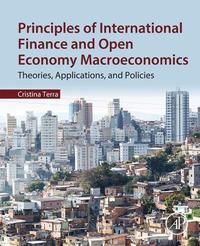Exercise 3 Consider an economy with external credit in a foreign currency and external debt in local
Question:
Exercise 3 Consider an economy with external credit in a foreign currency and external debt in local currency.
a. Obtain a mathematical expression to measure the NIIP variation of this economy as a percent of GDP. Consider that the GDP in period t is denoted by Yt.
b. Assume that this country has a current-account surplus of 1% of GDP, that its GDP growth rate is 2%, and that the NIIP of this economy is equal to 3% of GDP. What would be the necessary variation in exchange rate, measured as the amount of domestic 224 PRINCIPLES OF INTERNATIONAL FINANCE AND OPEN ECONOMY MACROECONOMICS currency necessary to purchase one unit of foreign currency, for the NIIP to be stable for next period? Can you measure the valuation effect in this case? How does the exchange rate change affect the NIIP in this economy? Explain your answer.
c. Using the parameters presented in the previous item, now consider a case where the economy has external credit denominated in local currency and external debt denominated in foreign currency. What should be the necessary exchange rate variation for the NIIP to be stable for next period? Would you be able to measure the valuation effect in this case? Compare your answer with the result obtained in the previous item.
d. Consider the case of the American economy. What would be the impact of a change in the price of American assets on the United States NIIP if these assets were positively correlated with price of European and Chinese assets? What would be the impact in the situation if the price of these assets were negatively correlated? Explain your answer.
Step by Step Answer:

Principles Of International Finance And Open Economy Macroeconomics Theories Applications And Policies
ISBN: 9780128022979
1st Edition
Authors: Cristina Terra






